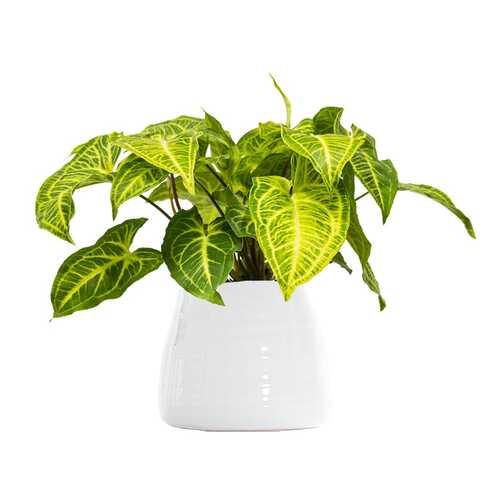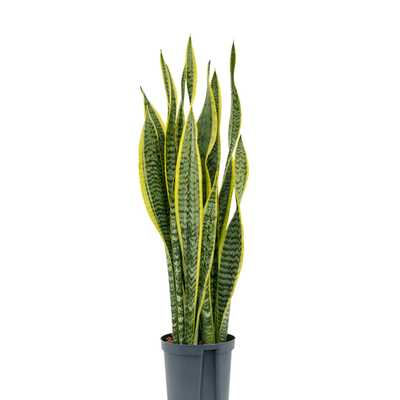Call US : 989124548005
Manjula Pothos
0 USD
Short Description:
Manjula Pothos is easy to care for. Like other Pothos plants, it adapts well to regular indoor growing conditions and is flexible in its requirements. It is resilient and adaptable, making it suitable for both novices and experienced plant enthusiasts.Overall features of Manjula Pothos
Manjula Pothos is truly a unique plant with a captivating appearance.
Manjula Pothos is easy to care for. Like other Pothos plants, it adapts well to regular indoor growing conditions and is flexible in its requirements. It is resilient and adaptable, making it suitable for both novices and experienced plant enthusiasts.
Similar to other species of the Pothos family, Manjula features broad, heart-shaped, wavy-edged green leaves. The beautiful plant displays multiple colors such as silver, white, cream, and light green. The irregular presence of colored patches on the leaves adds to its beauty. While most leaves of Pothos Manjula have scattered cream streaks, some may have large cream-colored spots or a combination of both.
The plant can be used in various spaces including apartments, greenhouses, workplaces, and offices. Moreover, it can be considered as a gift for special occasions, adding joy to the lives of loved ones.
Origin:
Originally developed in India, the visually appealing plant is in the Araceae family.
Light Requirements:
The versatile plant can grow in various lighting conditions, excluding direct sunlight. When the Manjula Pothos receives excessive indirect sunlight, it responds by turning its leaves entirely green as a protective mechanism. Additionally, the plant will develop dense foliage as it tries to optimize the available light. Therefore, if you desire a denser growth pattern, providing more light is the solution.
Insufficient light, on the other hand, will lead to diminished variegation.
When there’s insufficient light, Manjula Pothos compensates by producing more green leaves for photosynthesis and food production. This results in an increase in the green coloration of the leaves.
Pothos Manjula is photophilic, but it can tolerate low light conditions. This adaptability makes it a favored choice for indoor environments such as apartments. Indirect sunlight and placement in shaded or semi-shaded areas are ideal to prevent leaf burn.
It should be placed in an environment with bright, indirect light. Direct sunlight can harm the delicate leaves.
Watering
By closely monitoring the plant's leaves and soil, you can accurately assess when it requires watering. For this, gently examine the soil with your finger. Ideally, you should feel dry soil at a depth of 1-3 inches, with moist soil beneath it. This indicates that the plant is ready for watering.
The plant can tolerate slight underwatering. Regular watering will help maintain its beauty. In summer, water every 4 to 5 days; in winter, every 7 to 8 days.
Avoid overwatering to prevent root rot and leaf damage. Likewise, dry soil will cause the leaves’ edges to curl.
Proper soil
The plant requires light soil with good drainage. Compost soil is highly recommended.
To create an ideal soil mixture for a Manjula Pothos, we suggest combining equal proportions (25% each) of moisture control soil, cactus soil, perlite, and sphagnum moss.
While Pothos Manjula does not require regular fertilization, feeding it during the spring and summer seasons helps promote healthy growth and maintains its multicolor appearance. Using balanced liquid fertilizers on a monthly basis during the growing season is recommended for a beautiful and thriving plant.
To promote growth, fertilizer can be used during the growing season (spring and summer). A balanced 20-20-20 fertilizer is recommended, applied once a month.
Humidity and temperature:
As Pothos Manjula originates from tropical regions, it thrives in high humidity. Regularly dusting or cleaning the leaves with a damp sponge provides the necessary moisture. Adequate humidity levels act as a growth booster and enhance the plant's variegation, resulting in more vibrant leaves.
To ensure its well-being, maintain a consistent temperature range of 65-80 ° Fahrenheit.
If you encounter difficulties with growth and the emergence of new leaves, check the humidity levels. Keeping the humidity at a minimum of 50% will create an optimal environment for the Manjula to flourish.
Keep in mind that this tropical plant is not cold or frost-resistant.
The standard household temperatures and humidity usually is fine. However, to enhance its growth, you can put it in places like bathrooms, laundry rooms, or kitchens. As well, using an air humidifier nearby can be beneficial.
Note:
If you have pets or children, it's important to be cautious. Manjula Pothos is poisonous to cats and dogs, so to ensure their safety around the plant, proper care should be taken.
Brief overview:
Botanical Name: Epipremnum aureum Manjula
Family: Araceae
Plant’s classification: Ornamental houseplant
Requirements: Bright indirect light or filtered light, well-drained, loamy soil, Neutral PH: 6.1-6.5
| Colors : | Natural |
| Height : | 10cm |
| Pot (Liter) : | 19 |
Product Reviews
Similar Products
List of similar products that you can see

Yucca’s
0 USD

Yocca
0 USD

Zamioculcas Zamiifolia
0 USD

Syngonium’s
0 USD

Spathiphyllum
0 USD

Schefflera
0 USD

sansevieria
0 USD

Pothos Silver Splash
0 USD

Pothos adanson
0 USD

.jpg)
.jpg)
.jpg)
